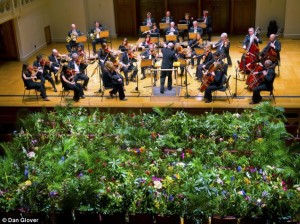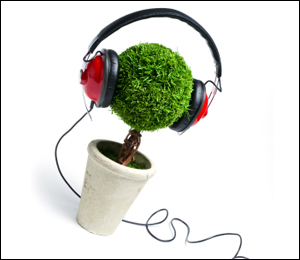Songs of Myself (Part 9)
By Asher Crispe: October 7, 2014: Category Inspirations, Simple Rhythms
 Our next musical modality expresses the kinship between the universal and the particular. Since we have been dealing with a set of ten musical types (which parallel the ten powers of the soul), it makes sense to name the set as a whole. Collectively they are referred to as ‘languages of song’ (lashonot shel niggun). They speak to different parts of our psyche. Yet, despite the range and diversity of songs, non-withstanding the differences that we have enumerated thus far and will continue to address, they respectfully fall in line under the umbrella of the term niggun itself. In this way, niggun could be thought of as signifying a ‘song of songs,’ or perhaps, it is better understood as a binding agent between songs, a unifying musical force.
Our next musical modality expresses the kinship between the universal and the particular. Since we have been dealing with a set of ten musical types (which parallel the ten powers of the soul), it makes sense to name the set as a whole. Collectively they are referred to as ‘languages of song’ (lashonot shel niggun). They speak to different parts of our psyche. Yet, despite the range and diversity of songs, non-withstanding the differences that we have enumerated thus far and will continue to address, they respectfully fall in line under the umbrella of the term niggun itself. In this way, niggun could be thought of as signifying a ‘song of songs,’ or perhaps, it is better understood as a binding agent between songs, a unifying musical force.
However, niggun does not merely name the set of songs or music types. It is also a member of that set. Its particularity relates to the power of the soul know as tiferet or beauty. Noting that beauty and other associate aesthetic adjectives themselves form a constellation of interrelated words in Hebrew, let us merely point out that tiferet denotes a synthetic quality or harmony between heterogenous elements. Those varied characteristics that make up the colored threads running through our lives become enhanced when they are woven together in such a manner so as to compliment each other. The colors must resist clashing and instead blend. So too with people. We might have our individualistic tendencies which would appear to keep up apart, but with the proper empathy (itself the inner dimension of tiferet according to Chassidic thought) we can come together as a single social fabric. Musically speaking, there is a particular way in which everything comes together. As such, tiferet marks a particularistic musical form that counts as a member of the set as well as being the name for the set as a whole.
Sensing the interrelationship between the whole and the part, the universal and the particular, the set and a member of that set, constitutes the basic consciousness of this configuration. If we are speaking of my music, songs of myself–those that stem from my subjectivity, from my personal life and experience and history–then we might come to doubt how that could ever appeal to anyone other than me? Could it be that I can never really share my music? Was it purchased for private use and solitary listening only? Can I ever be sure that you are hearing what I am hearing–especially the way in which it rattles my cage and tingles my spine? Am I flying solo? A party of one?
The evidence seems to be to the contrary. Where ordinary conversations fail, shared musical experience may often succeed. Feeling someone’s musical vibes could very well be the best delivery system for transmitting any sort of feeling. We reach out beyond ourselves in giving ourselves over to music and through music. From the depths of my person I may sing or play forth to the other. We mix and mingle.
Stirring melodies imply that I have been circulating within myself (within the various powers of the soul). The self-alienation and estrangement that fragments one part of my inner life from another collapses with a wave of sound that awakens my entire being. Realizing that the parts go together, this one ‘part’ of the parts paradoxically produces an awareness of how they all conjoin into a collectively forged single unit. From amidst my individual melody, I may come to connect to all melodies. My personal song may become a song for everyone. It speaks to universality from out of my particularity. On this level, each detail mirrors the whole and the whole mirrors the detail with the beauty of a fractal relationship. We must all participate in the musical ‘com-position.’
What else can we derive from the word niggun? By placing it under an etymological microscope, a number of its associate elements come to light. For starters this musical term carries a strong synesthesitic overtone. Synesthesia–the cross-wiring of senses–occupies a privileged place in the Torah as it accompanied the revelation on Mount Sinai as we read in Exodus (20:15): “All of the people saw the sounds, the flames, the sounds of the sound of the shofar [ram’s horn], and the mountain emitting smoke….” The commentator Rashi explains that “they saw that which is normally heard which is impossible to see on any other occasion.” Likewise, it is possible to hear what is ordinarily seen. Take, for instance, the composer Alexander Scriabin (1872-1915) for whom both the theosophic theories and the Opticks (1706) of Isaac Newton proved influential on his linking of musical pitches with colors. For Scriabin, a decidedly mystical fire was at work in the entanglement of audio-visual stimuli.
In Kabbalah, too, there is ample suggestion that preceded Newton (who himself has been well documented to have had a profound interest in Kabbalah and who studied Latin translations of numerous kabbalistic texts) that links the seven spectral colors of the rainbow (as he divided it) with the seven pitches per octave of the heptatonic scale. We even see an affinity between the Hebrew word for shevah meaning ‘seven’ and the word tzevah meaning ‘color.’ Inching along a bit further with this line of thought and we can also tie in the word tevah or ‘nature’ as if to say that the natural world is composed of sevens: seven colors as well as seven pitches.
The comparison is further enhanced when we consider that another synonym for color in Hebrew is gavan (itself built from the same root as niggun–our form of music under discussion). One kabbalistic teaching depicts Moshiach (the messiah) as a gardener (also from the same etymology as niggun [song] and gavan [color]) who tends to the garden (“gan” which derives from the identical two letter sub-root Gimmel-Nun of our train of words) by singing to the plants. This both encourages the growth of the plants and simultaneously uproots the weeds of the garden. Symbolically the plants represent the cultivation of spiritual growth within souls while the weeds are the manifestation of obstructing forces that misdirect and squander resources, stymieing our positive development.
By some accounts, the problem is that we think that the gardener is crazy for singing to the plants and therefore don’t take his approach seriously, chasing him out of the garden. Nonetheless, in the classic kabbalistic work known as Tikunei Zohar (51b), it states that “Israel [and by extension other sources include the entire world] will go out from exile by means of song [niggun].” Music culture really should cultivate the soul (which unfortunately is not always the case).
 We might suggest that this form of music, given how it is framed in this redemptive allegory, rings with approval for what is today called music therapy. On both a physiological and psycho-spiritual level, music has the power to heal. A gan or ‘garden’ can also looked upon as a acronym for guf-neshamah or ‘body and soul’ which in turn generates an image of our bodies as the ‘hollow instruments’ within which our soul oscillates in order to create our own unique music. With respect to the soul power of tiferet or beauty, we find the idiom “tiferet gufa” (Tikunei Zohar 17a) which underscores how this aesthetic sense is bound up with the “beauty of the body.” Balance and integration give beauty to the body as does overall proportionality. Thus, tiferet also corresponds to healing in general–healing whereby the part organizes itself within the whole and identifies (i.e. in a certain way names in an abstract sense) the whole just like our term niggun does within the set of music terms.
We might suggest that this form of music, given how it is framed in this redemptive allegory, rings with approval for what is today called music therapy. On both a physiological and psycho-spiritual level, music has the power to heal. A gan or ‘garden’ can also looked upon as a acronym for guf-neshamah or ‘body and soul’ which in turn generates an image of our bodies as the ‘hollow instruments’ within which our soul oscillates in order to create our own unique music. With respect to the soul power of tiferet or beauty, we find the idiom “tiferet gufa” (Tikunei Zohar 17a) which underscores how this aesthetic sense is bound up with the “beauty of the body.” Balance and integration give beauty to the body as does overall proportionality. Thus, tiferet also corresponds to healing in general–healing whereby the part organizes itself within the whole and identifies (i.e. in a certain way names in an abstract sense) the whole just like our term niggun does within the set of music terms.
Our next musical stop will be ‘for the conductor’ in Part 10.
http://www.interinclusion.org/inspirations/songs-of-myself-part-8/
Songs of Myself (Part 9),












;)
;)
;)
;)
;)
;)
;)
;)
;)
;)

absolutely fascinating and enlightening , with gratitude to Rabbi Crispe for my continuing interior musical education , to say I have been blessed by these insights is sheer understatement , so I will just say Thank you sir . I have already recommended these articles as well as Rock & Roll Redemption to a close musician friend and associate . I am listening , I hear ya .
Sincerely ,
Pete